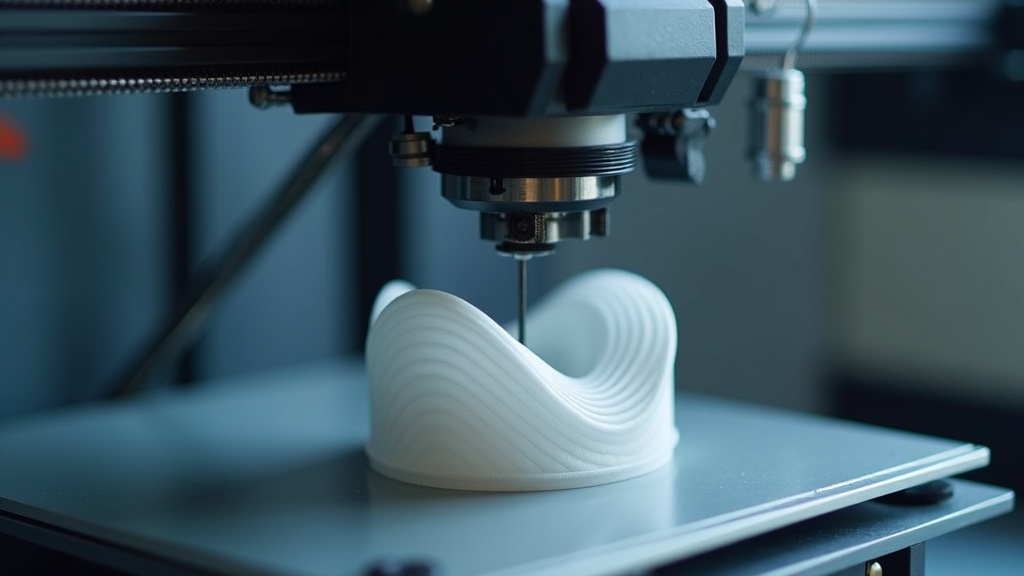3D printing is no longer just a buzzword or a pie-in-the-sky idea for gadget lovers. At this point, 3D printing has already become an everyday technology in many areas—from manufacturing and medicine to education and hombe projects. I notice a lot of people still waiting for 3D printing to “arrive” or make a big splash, but the truth is, the revolution has already happened. If you’re just looking into it now, you might be running behind, but that doesn’t mean you can’t catch up.

Why 3D Printing Feels Like the Present Instead of the Future
I have watched 3D printing move from high-tech labs and industry showcases to regular classrooms and even homes. Just a decade ago, the idea of making objects layer by layer from digital files seemed incredible. Today, businesses of all sizes, hobbyists, and even kids are designing and printing their own creations. The global 3D printing market, which is expected to reach over $50 billion by 2030 (according to Grand View Research), keeps growing as more people and companies find helpful ways to use it.
What makes this switch really interesting is how 3D printing is now considered a standard tool rather than a futuristic experiment. I see it used for making replacement parts, customized prosthetics, and even complex architectural models. These real-world examples show 3D printing is part of daily problem-solving, without any extra fanfare.
When you look at fields like dentistry, auto repair, and art, you’ll find 3D printers quietly at work. For many companies, having one in the corner is as normal as having a regular printer or copier. I remember helping a friend fix his trolling motor obsolete part with a 3D printed part I made at home on a desktop printer. Moments like this really show how 3D printing has moved into the mainstream.
Basic Concepts: How 3D Printing Works
Getting started with 3D printing can seem a little confusing if you’re new to it, especially with the different materials, printers, and terms people use. But I find it helps to break things down. 3D printing, sometimes called additive manufacturing, builds objects by printing them layer by layer from a digital design file. That file might be something you make, download, or scan.
- CAD (Computer Aided Design) Models: These are digital blueprints. Anything you want to print needs to be in a 3D model format, usually.STL or.OBJ.
- Printer Types: The most common home and office printers use FDM (Fused Deposition Modeling), which heats up plastic filament and lays it down layer by layer. There are also SLA (Stereolithography) printers that use lasers and liquid resin, giving smoother results, and SLS (Selective Laser Sintering) is used in industry.
- Materials: PLA and ABS plastics are very popular because they’re easy to work with and affordable, but you’ll also find options like flexible TPU, strong nylon, carbon-filled blends, and even metal and ceramic powders.
If you’re just starting out, I recommend getting familiar with a basic FDM printer, some PLA filament, and a simple slicer program that prepares your design for printing. Building small objects for fun or fixing things around the home is a great way to learn by doing. In fact, starting with something as simple as a keychain or a smartphone stand can really help solidify your understanding of the process while giving you instant satisfaction.
Practical Steps to Begin Your 3D Printing Adventure
Jumping into 3D printing can be exciting, but it can also feel overwhelming with so many choices and settings. Here’s how I recommend getting started in a way that avoids confusion while getting results fast:
- Pick a User-friendly Printer: Look for an entry-level FDM printer. Models from brands like Creality, Prusa, and Anycubic are known for being reliable right out of the box.
- Choose Simple Projects First: Try printing useful household items, toy figures, or basic organizers. A site like Thingiverse offers free downloadable designs, so you don’t need any modeling skills at the start.
- Practice Slicing and Settings: Install a slicer program (such as Cura or Prusa-Slicer), load your STL file, and get to know options such as layer height, infill percentage, and print speed. Tweaking these settings helps you learn what works best for different objects.
- Experiment and Don’t Worry About Failure: Expect a few mishaps on your first prints, like loose strands or wobbly edges. These are normal. Each failed print teaches you something new about settings, materials, or maintenance.
- Join Online Groups: I found great advice, practical tips, and troubleshooting guides on forums like Reddit’s r/3Dprinting or local Facebook groups. Community support is helpful when you run into problems.
Additionally, if you have a local makerspace or library with 3D printers, take advantage of workshops or staff expertise. This can help flatten your learning curve and avoid some common pitfalls early on.
Everyday Uses: Where 3D Printing is Already Mainstream
One of the biggest surprises for me was how many areas 3D printing is active in without most people noticing. Here are a few examples I’ve come across either in my own life or through friends and professional contacts:
- Home Repairs: Families print replacement knobs, brackets, and even small gears instead of ordering new parts, which saves time and money.
- Hobby Projects: Model train enthusiasts, Dungeons & Dragons players, and cosplay fans print everything from custom scenery to miniature weapons and armor.
- Medical Solutions: Hospitals use 3D printing for patient-specific surgical guides and to prototype prosthetic limbs and dental devices, helping doctors offer better care for patients with unique needs.
- Automotive and Engineering: Workshops print jigs, fitment tools, and even experimental car components to test designs quickly and affordably.
- Education: Schools now teach 3D modeling and printing, letting students create and handle physical versions of their ideas, from historical models to simple machines.
- Personalized Gifts and Crafts: Many people print customized gifts such as nameplates, ornaments, or even jewelry. It’s a perfect way to put a personal touch on presents for special occasions.
Every time I visit a makerspace or check in with friends at work, I hear about another practical use or creative idea made possible by 3D printing. This type of regular, behind-the-scenes impact is often what shows me a technology has truly arrived. For example, 3D printing is also making headway in culinary arts, where chefs use edible filaments to create eye-catching food designs or custom molds for desserts.
What to Consider Before Your First Printer
If you’re thinking of getting your own 3D printer, there are a few practical things I found helpful to check before spending money:
- Printer Size and Build Volume: Make sure you have space for the printer and that it prints objects as large as you expect. Many beginner models are compact, but check the build area (length, width, and height in millimeters).
- Cost of Consumables: Don’t forget about filament, replacement nozzles, or bed surfaces. Check how much these will add to your budget over time.
- Learning Curve: Even the plug and play require some setup and adjustment.
- Safety Concerns: Be careful with hot parts and moving motors. Keep the printer away from young kids, and make sure the area is well ventilated if you’re using materials that give off fumes.
- Support and Warranty: Companies with good support and active user forums are a big help if you run into issues.
Printer Size and Upgrades
I quickly learned that a bigger printer means you can make larger items, but it also takes up more desk space and is usually louder. For most home uses, a printer with a build volume close to 200 x 200 x 200 mm is plenty. As you get more comfortable, you may consider upgrades like silent stepper drivers or automatic bed leveling to make printing smoother and less noisy.
Materials and Maintenance
PLA is easy to use and safe, but if you want to try other filaments like ABS or PETG, make sure your printer is designed for those materials and ventilate your workspace. Regular cleaning and occasional part replacement, such as nozzle swaps and bed releveling, can improve your prints’ quality and extend your printer’s life.
Advanced Tips for Getting the Most Out of 3D Printing
Once you’re comfortable with the basics, there are some minor upgrades and tips I have found that really help improve results:
Level the Bed Often: Keeping the print bed level and clean helps prevent many print failures. I always check this after every few prints.
Explore Modeling Tools: Learning simple Tinkercad or free Fusion 360 lets you design your own parts instead of only printing downloaded files. This opens up creative possibilities for fixing broken items or inventing new ones.
Try Different Filaments: Once PLA feels easy, experiment with PETG for stronger parts or TPU for flexible prints. Each material has its quirks and can be really useful for different jobs.
Post-Processing: —sanding, painting, or gluing—can make prints
Backing Up Files and Calibrating: Save your best print settings and models in a folder, and back them up so you have an archive of what’s worked well. Also, run calibration tests—benchies (boat models) are popular—for dialing in your machine’s quality.
Common Questions About 3D Printing Today
It’s normal to have questions when starting out with 3D printing. Here are the answers I wish I had when I began:
What’s a good entry-level 3D printer?
From my own experience, models like the Ender 3 series or Prusa Mini offer good value and strong community support for troubleshooting and upgrades.
Is 3D printing really practical at home?
I use 3D printing almost every month, whether I’m making a tool, fixing something, or working on art projects. If you like creating or want to fix things yourself, it can become a very useful hobby. Over time, you’ll likely spot clever uses you hadn’t even imagined, from storage solutions to unique gifts.
How safe are 3D printers for beginners?
As long as you follow the instructions and place your machine in a safe spot with some ventilation, 3D printing is about as safe as running a toaster oven or power drill.
Do I need to know how to design 3D models?
No, you don’t need any design experience at the beginning—there are thousands of free models online. As you get interested in customization, learning basic CAD tools will give you more control over your projects.
3D Printing Is Already Here. What Will You Make?
3D printing is not a distant vision anymore. It’s a hands-on, creative tool that’s already solving problems and sparking ideas for regular people, schools, businesses, and even hospitals. While it might feel like you missed the early wave, I find there’s never been a better time to jump in, try out some projects, and see what you can make.
Asking questions, learning from mistakes, and getting inspired by what others are building can help you turn 3D printing from an occasional experiment into a practical, daily technology in your own life. The only real limit is your imagination and your willingness to experiment.
If you’re curious, start with your library or a borrowed printer, try printing something for fun, and see how quickly you get hooked. 3D printing is already here—time to see what you can do with it today.

